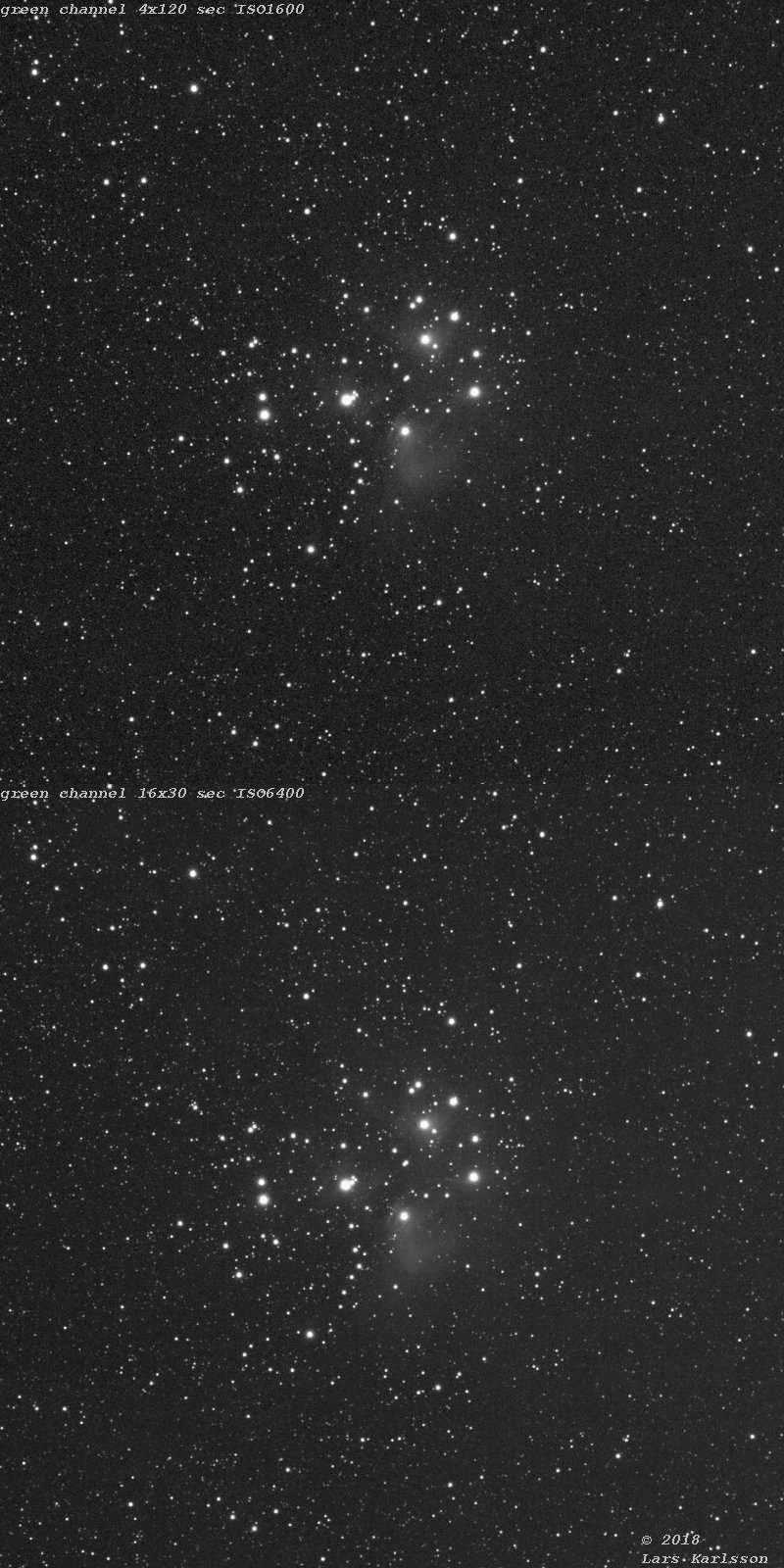|
Advertisement / Annons: |
Tutorial:
|
Content:
Note: |
5, Long exposure low gain vs Short exposure high gain:When you have many short exposures and stack them together the readout noise from everyone adds up by square rot. 4 times more readouts means twice the noise. Some cameras has lower readout noise when ISO setting is high. My Canon 6D has about these figures, ISO 1600 3e-, ISO 6400 1.5e-. Increasing ISO from 1600 to 6400 means the headroom before clipping reduce by a factor of 4. But if we both increase the ISO and shorten the exposure time by the same factor we will keep both the noise and the dynamics, also the S/N, at least in theory. Some cameras doesn't have this option. Here are two examples, can you see any difference? 
Here how it looks, the brightest stars has saturated, but there are not any big difference in this case between long and short exposures. I tried to do the image processing as simple as possible and identical. Dithering, bias and dark subtracted by a constant, flat calibrated, gamma 2.2, only green channel. Crop of center area, 1:1 pixel match. Some calculations, in theory.
With short exposures you get a lot of more images to process, but with poor guiding you get better stars with short exposures. Also satellite tracks are more easily to get rid of with many images, median stacking cancel this. There are of course other sources of noise, but the readout noise is the important one when we do this comparison. It's normally CMOS cameras that have this option with high gain and low noise. What they do is to amplify the signal before it go to the ADC. I normally do not doing like this in normal case. I use ISO 800 and 1 or 2 minutes exposures when using camera lenses, f/2.8 or f/4.0. There is high light pollution where I live.
|
| Go Back |